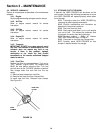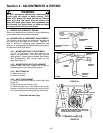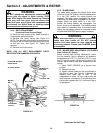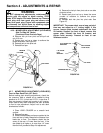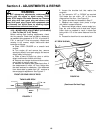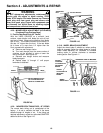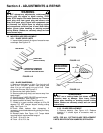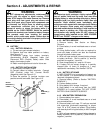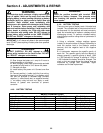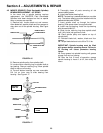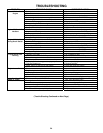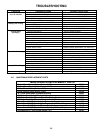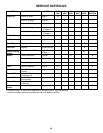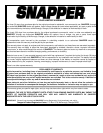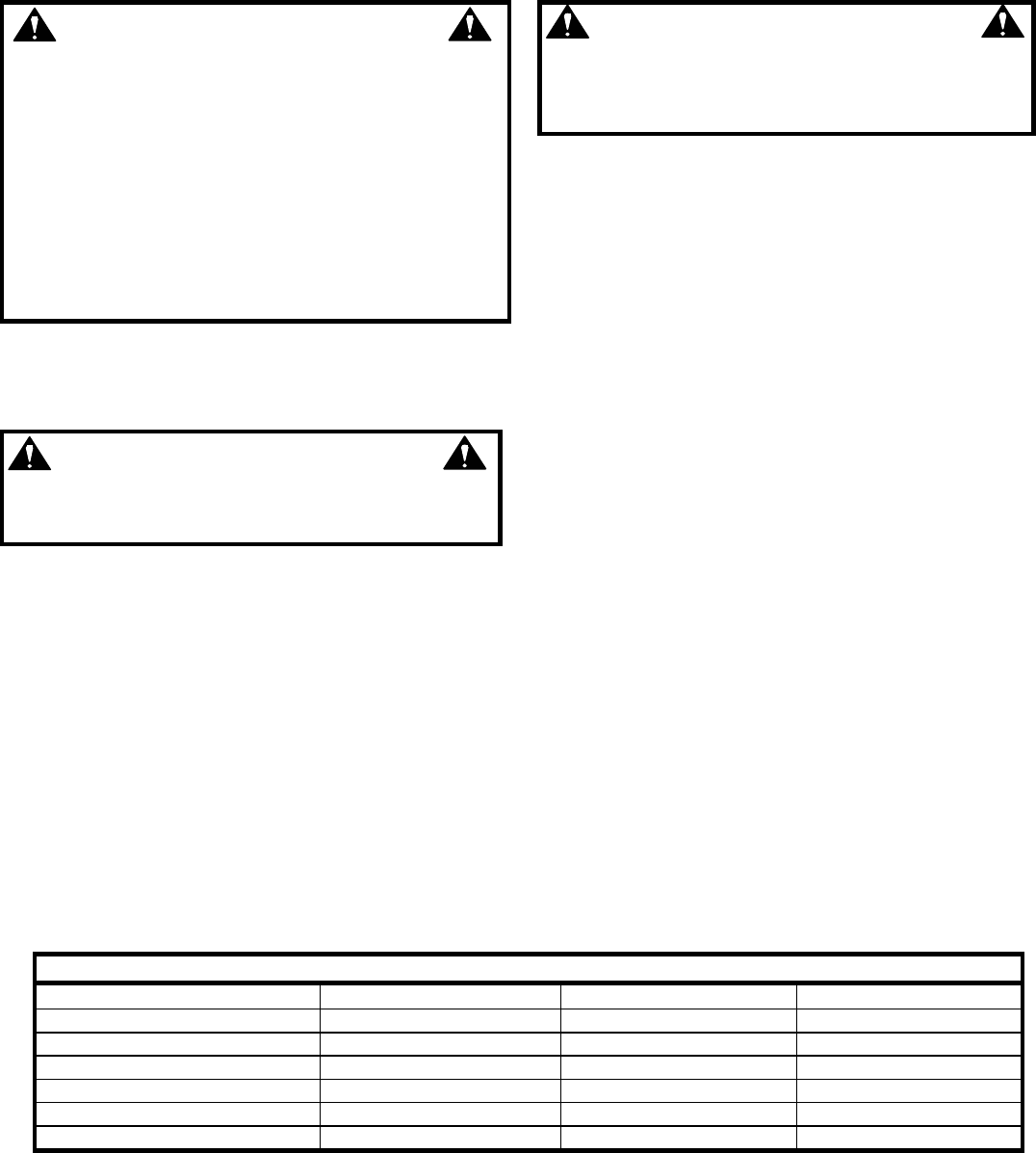
22
Section 4 - ADJUSTMENTS & REPAIR
WARNING
The electrolyte (acid) produces a highly explosive gas.
Keep all sparks, flame and fire away from area when
charging battery or when handling electrolyte or battery.
Electrolyte (acid) is a highly corrosive liquid. Wear eye
protection. Wash affected areas immediately after
having eye or skin contact with electrolyte (acid). Battery
acid is corrosive. Rinse empty acid containers with
water and mutilate before discarding. If acid is spilled on
battery, bench, or clothing, etc., Flush with clear water
and neutralize with baking soda. DO NOT attempt to
charge battery while installed on the YARD CRUISER.
DO NOT use “BOOST” chargers on the battery.
IMPORTANT: 3/16” above cell plates is the recommended
level. DO NOT place anything in battery other than specified
electrolyte.
WARNING
DO NOT OVERFILL! DO NOT attempt to charge
battery while installed on the Yard Cruiser. DO NOT
use “BOOST” chargers on the battery.
5. Slow charge the battery at 1 amp for 2 hours to
bring the battery to full charge.
6. After charging, check level of electrolyte and add
as needed to bring level to 3/16” above cell plates.
7. Reinstall cell caps.
8. Install battery into power unit. Connect over flow
tube.
9. Connect positive (+) cable (red) first, from wiring
harness to the positive terminal (+) on battery using
bolt and nut provided in hardware bag. Connect
negative (-) cable (black) last, to negative terminal
(-) on battery using bolt and nut. Apply a small
amount of grease over terminals to prevent
corrosion.
WARNING
Shield the positive terminal with terminal cover
located on battery harness. This prevents metal
from touching the positive terminal, which could
cause sparks.
4.4.6. BATTERY TESTING
There are two types of battery tests: Unloaded and
Loaded. The unloaded test is the procedure that will
be discussed. It’s the simplest and most commonly
used. An unloaded test is made on a battery without
discharging current. To perform unloaded testing,
check charge condition using either a hydrometer or
voltmeter.
1. Using a voltmeter, voltage readings appear
instantly to show the state of charge. Remember to
hook the positive lead to the battery’s positive
terminal, and the negative lead to the negative
terminal.
2. A hydrometer measures the specific gravity of
each cell. The specific gravity tells the degree of
charge; generally, a specific gravity of about 1.265
to 1.280 indicates full charge. A reading of 1.230 to
1.260 indicates the battery should be charged. The
chart on the next page shows the charge level as
measured by syringe float hydrometer, digital
voltmeter and five ball hydrometer.
4.4.6. BATTERY TESTING
Battery Condition Chart
State of Charge Syringe Hydrometer Digital Voltmeter Five Ball Hydrometer
100% Charged w/ Sulfate Stop 1.280 12.80v Five Balls Floating
100% Charged 1.265 12.60v Four Balls Floating
75% Charged 1.210 12.40v Three Balls Floating
50% Charged 1.160 12.10v Two Balls Floating
25% Charged 1.120 11.90v One Ball Floating
0% Charged Less than 1.100 Less than 11.80v Zero Balls Floating



